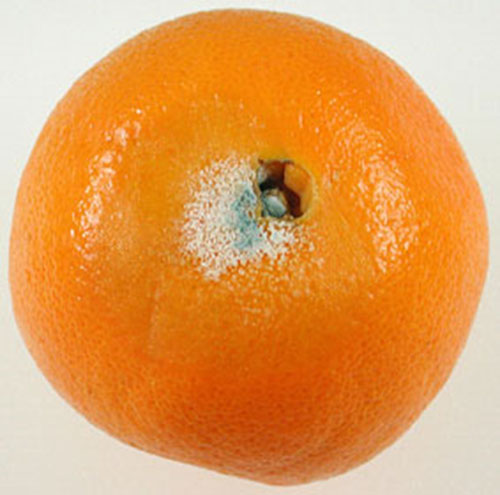One of the most common questions I hear during my training classes is confusion over the term “free from.” If you pick up any U.S. Grade Standard you will see this term, sometimes referring to more than one defect. For the purpose of keeping the explanation simple I will discuss one of the most common “free from” defects, decay.

In all U.S. Grade Standards you will find wording in the U.S. No.1 Grade section reading something like this, “consists of product which is, clean, mature, fairly well formed, fairly well colored and free from decay.” Anytime you see the term “free from” it means any amount of decay on the fruit or vegetable is a defect. Any amount! If you see a small spot (less than 1/2 inch) of decay, it is a defect, scored as decay. If you see a large spot (greater than 1/2 inch), it is still scored as decay. And if you see any spot, no matter what the size, even smaller than 1/4 inch, and you can identify the spot as being decay, it is also scored as decay.
OK, so we have made the point, if you see any amount of decay on the specimen, it is a defect, scored as decay. But the Grade Standard says that decay is a free from defect, so if we find a specimen with decay, it is scored as a defect, and the lot, or product is out of grade, right, because it is a “free from” defect? Wrong, that’s where the confusion begins. The Grade Standard simply states decay is a free from defect, which means any amount of decay on the specimen is scored as a defect, and it is scored as decay. But if you continue to read through the Grade Standard you will find a section titled “Tolerances”…….and you will find something like this; “For defects, 10% by count which fail to meet the requirements of the grade, including 5% for defects causing serious damage, and including 2% decay.”
This is the key, when you find the tolerance for decay, (2% decay, as shown above), you now have to determine the percent of decay you found in your samples. Remember, these are the specimens that you found any amount of decay on, since decay is a “free from” defect. Total up your percentages and determine if more than 2% of the specimens in your samples did indeed have decay….if so, the lot fails to grade.
In future posts I will discuss some other common “free from defects”, such as soft, overripe, and some commodity specific free from defects, such as late blight, abnormal coloring, and shriveling.

No Comments on “Free From Defects”